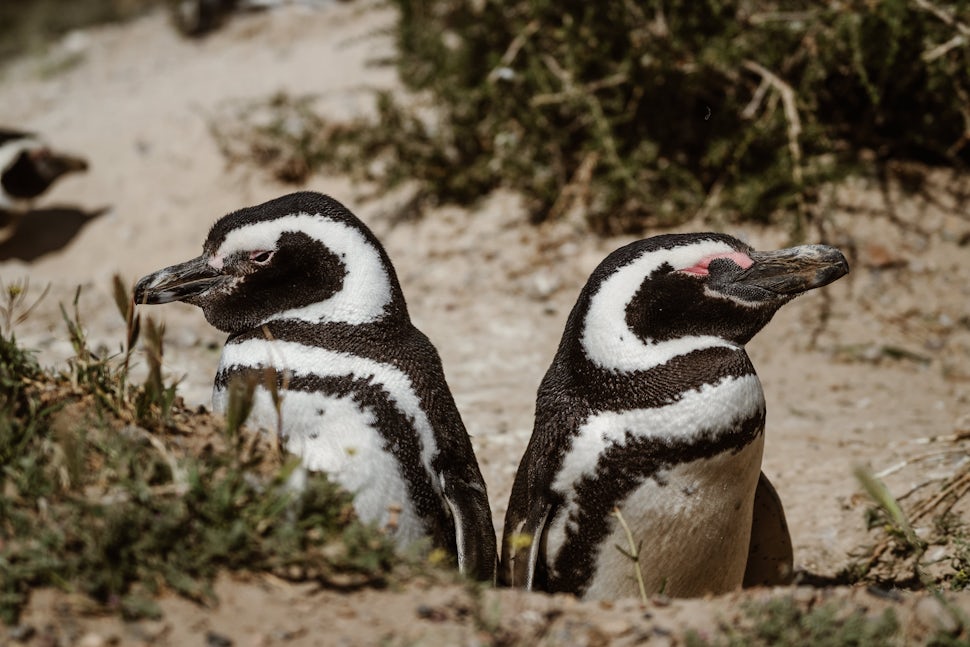Peninsula Valdes - A Different Side of Patagonia
When you think of Patagonia, what do you think of? Mountains and glaciers most likely. But the east coast of Patagonia is a whole other world.

We were drawn to Patagonia for the same reason so many people are. The incredible mountain ranges and the magnificent glaciers. And when we started planning our trip all the "usual suspects" were on out itinerary; Torres Del Paine, El Chalten and Perito Moreno Glacier.
One evening whilst watching Planet Earth, we learned about another side to Patagonia. The east coast. In his dulcet tones, we were fascinated as Sir David Attenborough narrated incredible footage of orcas in Patagonia who had a very unique hunting technique. They would practically beach themselves in order to reach the young seals and sea lions playing in the shallow waters.
We were absolutely captivated, and started researching this part of Patagonia that until now was completely unknown to us. And we found out that the area around Peninsula Valdes was not only known for the orcas but also as home to many other amazing species of wildlife. We knew we'd have to make time in our schedule to visit.
When to Visit
Because we were traveling to Patagonia mainly with the intent to go ski touring (you can read about our adventures in that here), we were going in October, which is spring in Patagonia. After a lot of research, we found out that we would miss orca season, which usually happens around March-April. But we would be there at the perfect time for Southern Right Whales and the Magellanic penguins.
How to Get There and Get Around
We took a domestic flight from El Calafate to Trelew, and from there we picked up a hire car to drive out to Puerto Piramides. From Buenos Aires there are lots of domestic flights to both Trelew and Puerto Madryn, and with a car the drive to the peninsula is around two hours. We had read about day trips by coach taking people from Puerto Madryn, but having a rental car was perfect for us.
The only town (it's really more of a village than a town) on Peninsula Valdes is Puerto Piramides. This is where you'll find most of the accommodation on the peninsula, unless you have a lot of money to spend staying on one of the estancias. We stayed here for 4 days, which was an ideal amount of time.
What to See and Do
Most of the people who only come for the day go on one of the many whale watching tours from Puerto Piramides. There are a number of operators in the bay, and all charge around the same rate. But you don't even need to be on a boat to see the whales, as you can often see them flapping their fins and waving their tails right from the shore.
Because we had a car, on our first day day we drove out to the most north-easterly point, Punte Norte and then followed the road around the whole peninsula. One thing you do need to bear in mind if you decide to drive is that all the roads after Puerto Piramides are dirt, sand and gravel roads, so you do need to drive pretty slowly. At the different spots along the route you'll come across all kinds of amazing flora and fauna. At Punta Norte we watched as enormous elephant seals nursed their newborn pups. Further along the coast we came across a colony of Magellanic penguins. We also saw some really interesting birds and a mara whilst driving along.
Instead of going on a whale watching boat, we decided to opt for something a bit more adventurous, and booked a sea kayaking day trip around one of the gulfs. Being the season for the Southern Right whale, we were hopeful to see some from our kayaks, and we were absolutely blown away when they started swimming right alongside us in the water. Unfortunately the crazy Patagonia wind didn't allow us to kayak too far before we hard to turn back. Since we couldn't reach a resident sea lion colony by water, we decided to hike over instead. As we hiked over the headland, we also watched in awe as young whales breached in the distance. The whole experience was just amazing.
See more photos from our trip below!


We want to acknowledge and thank the past, present, and future generations of all Native Nations and Indigenous Peoples whose ancestral lands we travel, explore, and play on. Always practice Leave No Trace ethics on your adventures and follow local regulations. Please explore responsibly!
Do you love the outdoors?
Yep, us too. That's why we send you the best local adventures, stories, and expert advice, right to your inbox.













































